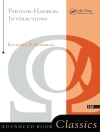This book describes cutting-edge applications of human factors for sports, injury prevention and outdoor recreation disciplines and provide practical guidance on a range of methods for describing, representing, and evaluating human, team, and system performance in various domains. Contributions in this book show how various human factors methods, applied historically in the complex safety critical domains, are suited to describing and understanding sports performance and sports injury prevention. The book discusses a wealth of methods for different purposes, such as data collection, task analysis (including cognitive task analysis), workload measurement, assessing situation awareness, performance assessment (including team performance assessment), decision making and cognition in sports, human error identification, and interface evaluation methods. With respect to other publications in human factors and ergonomics, which have been more focused on the biomechanical, physiological, environmental, and equipment-related aspects of sports performance, this book gives a special emphasis to research on analysis of individual and team sports, cognitive and social human factors, and covers both sports and outdoor recreation disciplines. Based on the AHFE 2017 Conference on Human Factors in Sports, Injury Prevention and Outdoor Recreation, held on July 17-21, 2017, in Los Angeles, California, USA, this book provides readers with a timely survey of new methods that can be implemented during any sport or outdoor recreation event, and for analyzing and improving the performance and safety of both individuals and teams.
Spis treści
Effect of rater expertise on subjective agility assessment.- Effectiveness of avoiding head collision of a head with an object in motion – virtual reality technology in diagnostic and training from perspective of prophylactic of body injuries.- Methodology for the assessment of clothing and individual equipment (CIE).- Dynamic model of athlete’s emotions based on wearable devices.












